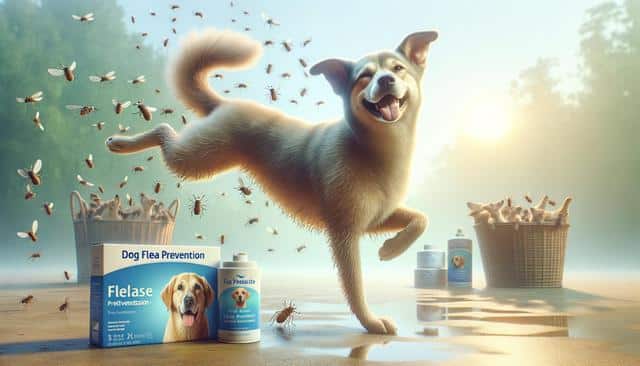
A Practical Guide to Keeping Your Dog Comfortable and Free from Fleas
Identifying Fleas on Your Dog
Identifying fleas early on your dog is crucial in preventing discomfort and potential health issues. Fleas are small, wingless insects that are difficult to spot with the naked eye. However, you might notice your dog scratching more often or see tiny black or brown specks, known as flea dirt, in their fur. A good way to check for fleas is to use a fine-toothed comb and run it through your dog’s coat, especially around the neck and tail areas. If you notice any of these signs, it’s time to take action to remove these pests.
Treatment Options for Fleas
When it comes to treating fleas, there are several options available to suit your pet’s needs. Topical treatments are among the most popular, as they are easy to apply and work quickly to eliminate fleas. Oral medications are another effective choice, offering long-lasting protection. Here are some considerations when choosing a treatment:
- Consult your veterinarian for recommendations tailored to your dog’s age, weight, and health status.
- Consider using natural remedies such as essential oils or herbal treatments if you prefer a chemical-free approach.
- Be consistent with treatment, especially during peak flea season.
No matter which treatment you choose, following the instructions carefully is essential to ensure maximum effectiveness and safety for your dog.
Preventing Flea Infestations
Prevention is key when it comes to keeping your dog free from fleas. Regular grooming is a simple and effective way to reduce the risk of flea infestations. Bathing your dog with a flea-repelling shampoo, followed by using a flea comb, can help keep these pests at bay. Additionally, maintaining a clean and tidy environment is crucial. This includes:
- Regularly washing your dog’s bedding and toys in hot water to kill any fleas or eggs.
- Vacuuming carpets and furniture frequently to remove flea larvae before they develop.
- Using flea sprays or powders in areas where your dog spends a lot of time.
By taking these preventive measures, you can significantly reduce the risk of fleas becoming a problem for your pet.
Natural Flea Control Methods
For those seeking natural flea control methods, several options can help keep fleas away without using harsh chemicals. Essential oils like lavender, rosemary, and peppermint are known for their flea-repelling properties. You can create a natural flea spray by diluting a few drops of these oils in water and misting your dog’s coat. Additionally, including garlic and brewer’s yeast in your dog’s diet is believed to deter fleas. However, it’s essential to consult with your veterinarian before trying any new dietary changes to ensure they are safe for your pet.
Understanding the Life Cycle of Fleas
Understanding the flea life cycle is beneficial in combating these pests. Fleas undergo four stages: egg, larva, pupa, and adult. Adult fleas lay eggs in your dog’s fur, which then fall off and hatch in the environment, such as carpets or bedding. The larvae develop into pupae, which are resistant to many flea treatments, making them difficult to eliminate. Finally, they emerge as adults ready to infest your dog again. Breaking this cycle requires consistent preventive measures and treatment to address all stages of the flea life cycle.
Conclusion
By understanding how to identify, treat, and prevent fleas, you can ensure your dog remains comfortable and healthy. Regular grooming, environmentally friendly cleaning habits, and consulting with your veterinarian for advice tailored to your dog’s needs are all essential components of effective flea prevention and control. By staying proactive, you can keep your pet happy and free from the discomfort of fleas.